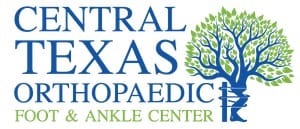Common Diagnoses:
Ingrown Toenails
Ingrown Toenails Overview
Ingrown toenails are a common condition in which the corner or side of a toenail grows into the soft flesh. The result is pain, redness, swelling and, sometimes, an infection. Ingrown toenails usually affect your big toe.
Often you can take care of ingrown toenails on your own. If the pain is severe or spreading, your doctor can take steps to relieve your discomfort and help you avoid complications of ingrown toenails.
If you have diabetes or another condition that causes poor blood flow to your feet, you’re at greater risk of complications of ingrown toenails.
Ingrown Toenails Symptoms
Ingrown toenail symptoms include:
- Pain and tenderness in your toe along one or both sides of the nail
- Redness around your toenail
- Swelling of your toe around the nail
Infection of the tissue around your toenail
Ingrown Toenails Diagnosis
Your doctor can diagnose an ingrown toenail based on your symptoms and a physical examination of your nail and the surrounding skin.
Ingrown Toenails Treatment
If home remedies haven’t helped your ingrown toenail, your doctor may recommend:
- Lifting the nail. For a slightly ingrown nail (redness and pain but no pus), your doctor may carefully lift the ingrowing nail edge and place cotton, dental floss or a splint under it. This separates the nail from the overlying skin and helps the nail grow above the skin edge. At home, you’ll need to soak the toe and replace the material daily.
- Partially removing the nail. For a more severe ingrown toenail (redness, pain and pus), your doctor may trim or remove the ingrown portion of the nail. Before this procedure, your doctor may temporarily numb your toe by injecting it with an anesthetic.
- Removing the nail and tissue. If you have the problem repeatedly on the same toe, your doctor may suggest removing a portion of the nail along with the underlying tissue (nail bed). This procedure may prevent that part of your nail from growing back. Your doctor will use a chemical, a laser or other methods.
Your doctor may also recommend using topical or oral antibiotics, especially if the toe is infected or at risk of becoming infected.

